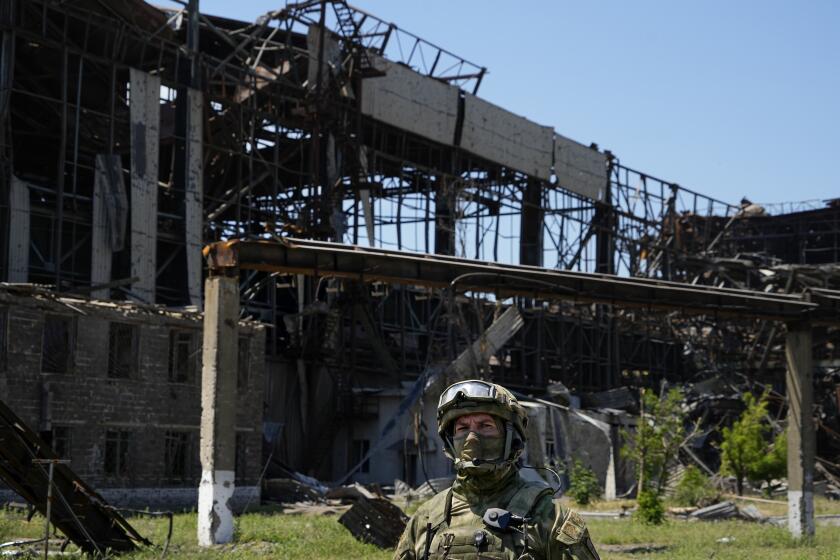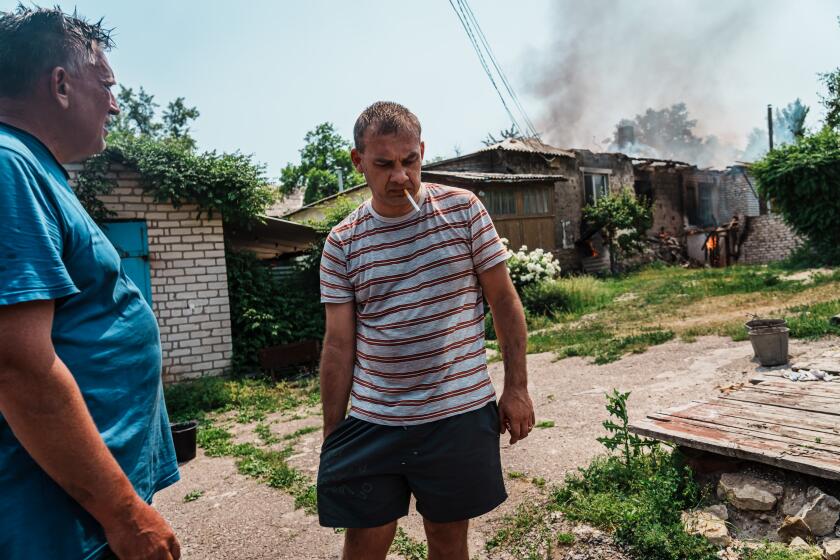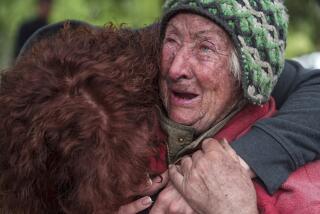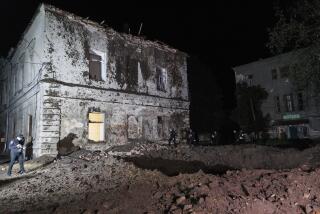Mines continue to kill in Ukraine even after fighting moves on

Russian forces are laying mines and other explosives that disrupt agriculture and rebuilding and leave the risk of death even after fighting stops.
- Share via
MAKARIV, Ukraine — The truck driver had the radio on, his daughter’s stuffed toy to keep him company and was bouncing his lumbering vehicle down one of the innumerable dirt tracks in Ukraine that are vital thoroughfares in the country’s vast agricultural heartlands.
Then the right rear wheel hit a Soviet-era TM-62 antitank mine. The explosion blew Vadym Schvydchenko and his daughter’s toy clean out of the cabin. The truck, and his livelihood, went up in flames.
Astoundingly, the 40-year-old escaped with just minor leg and head wounds. Others haven’t been so lucky. Russia’s war in Ukraine is spreading a deadly litter of mines, bombs and other explosives that are killing civilians, disrupting planting and complicating the rebuilding of homes and villages, and that will continue taking lives and limbs long after the fighting stops.
Often, blast victims are farmers and other rural workers with little choice but to use mined roads and plow mined fields, in a country relied on for grain and other crops that feed the world.
Schvydchenko said he would steer clear of dirt tracks for the foreseeable future, although they’re sometimes the only route to fields and rural settlements. Mushroom-picking in the woods has also lost its appeal to him.
“I’m afraid something like this can happen again,” he said.
The fight over Severodonetsk has moved into the city center, officials say, as Russia ramps up its artillery offensive and its military spending.
Ukraine is now one of the most mined countries in Europe. The east of the country, fought over with Russia-backed separatists since 2014, was already contaminated by mines even before the Feb. 24 invasion multiplied the scale and complexity of the dangers both there and elsewhere.
Ukraine’s State Emergency Service said last week that 115,000 square miles — the size of Arizona — need to be cleared. The ongoing fighting will only expand the area.
The war’s deadly remnants will “continue to be a hidden threat for many years to come,” said Mairi Cunningham, who leads clearance efforts in Ukraine for the Halo Trust, a de-mining NGO that got $4 million in U.S. government funding in May for its work in the country.
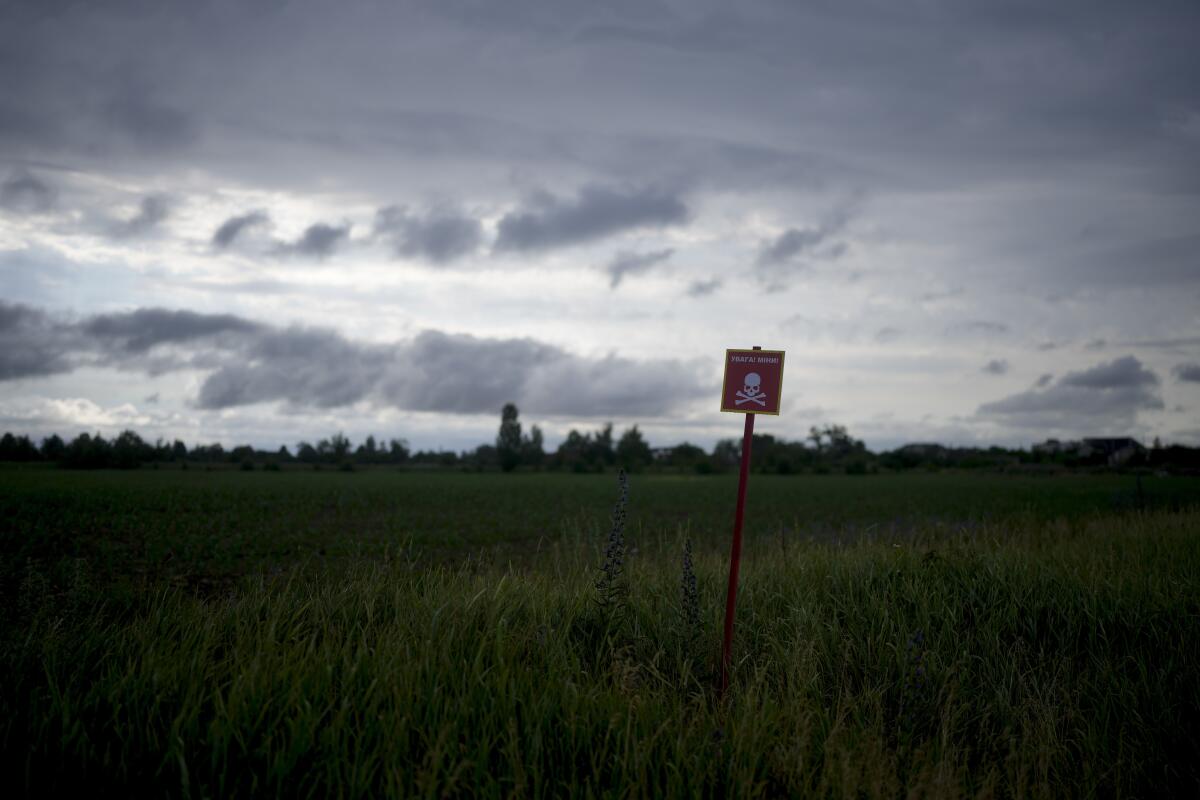
There’s no complete government count of mine deaths since the invasion, but every week authorities have reported cases of civilians killed and wounded. Cunningham said her group has counted 52 civilian deaths and 65 injuries since February and “that’s likely under-reported.” The majority were from antitank mines in agricultural areas, she said.
On a mobile app called De-mining Ukraine that officials launched last month, people can send photos, video and the geolocation of explosive objects they come across, for subsequent removal. The app got more than 2,000 tips in its first week.
The track where Schvydchenko had his brush with death is still used, despite now being marked with bright red warning signs bearing a white skull and crossbones. It scythes through corn fields on the outskirts of Makariv — a once comely town west of Kyiv that bears the battle scars of Russia’s failed assault on the capital in the war’s early weeks.
A sense of death hangs over cities in eastern Ukraine
Even with the Russian soldiers gone, danger lurks amid the surrounding poppy meadows, fields and woodlands. De-miners found another explosive charge — undetonated — just feet away from Schvydchenko’s blown-up truck. On another track outside the nearby village of Andriivka, three people were killed in March by a mine that ripped open their minivan, spewing its cargo of food jars and tin cans now rusting in the dirt.
In a field close by, a tractor driver was wounded in May by an antitank mine that hurled the wreckage onto another mine, which also detonated. Halo Trust workers are now methodically scouring that site — where Russian troops dug foxholes — for any other devices.
Cunningham said the chaotic way the battle for Kyiv unfolded complicates the task of finding mines. Russian forces thrust toward the capital but were repelled by Ukrainian defenders.
“Often it was [that] Russians held an area, put some anti-vehicle mines nearby — a few in and around their position — and then left,” she said. “It’s scattered.”
Start your day right
Sign up for Essential California for the L.A. Times biggest news, features and recommendations in your inbox six days a week.
You may occasionally receive promotional content from the Los Angeles Times.
Mines are still being laid on the battlefields, now concentrated to the east and south, where Russia has focused its offensive since its soldiers withdrew from around Kyiv and the north, badly bloodied.
A Ukrainian unit that buried TM-62 mines on a forest track in the eastern Donbas region this week, in holes scooped out with spades, told the Associated Press that the aim was to prevent Russian troops from advancing toward their trenches.
Russian booby-trapping has sometimes had no clear military rhyme or reason, Ukrainian officials say. In towns around Kyiv, explosive experts found devices in unpredictable places.
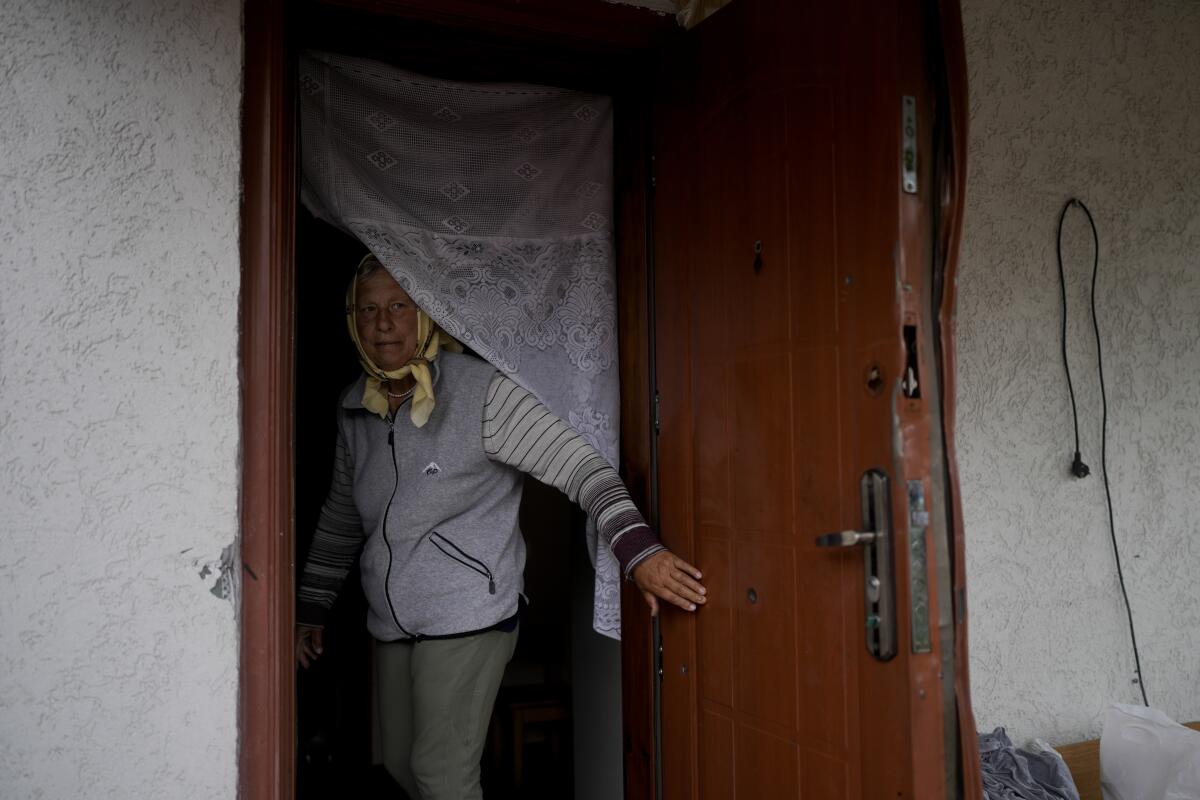
When Tetiana Kutsenko, 71, got back her home near Makariv that Russian troops had occupied, she found bloodstains and an apparent bullet hole on the bathroom floor and tripwires in her back yard.
The thin strands of copper wire had been rigged to explosive detonators.
“I’m afraid to go to the woods now,” she said. “Now, I’m looking down every time I take a step.”
More to Read
Sign up for Essential California
The most important California stories and recommendations in your inbox every morning.
You may occasionally receive promotional content from the Los Angeles Times.
